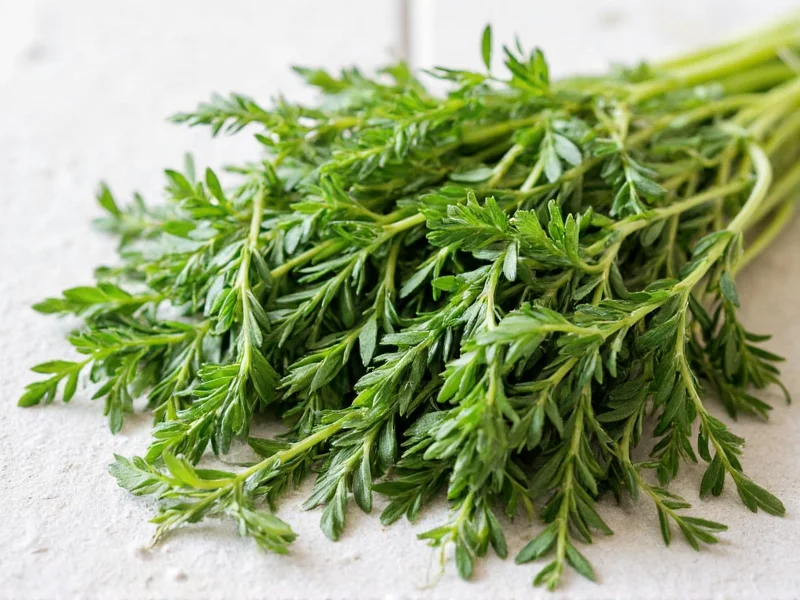Understanding herb conversions is essential for consistent cooking results. Tarragon, with its distinctive anise-like flavor, behaves differently in dried versus fresh form, affecting both measurement and culinary application. This guide provides precise substitution guidelines backed by professional culinary knowledge.
Understanding Tarragon: Dried vs. Fresh
Tarragon (Artemisia dracunculus) is a delicate perennial herb prized in French cuisine. The drying process fundamentally changes its chemical composition, resulting in notable differences:
- Flavor intensity: Dried tarragon concentrates essential oils, making it approximately three times stronger than fresh
- Flavor profile: Fresh tarragon offers brighter, grassier notes with pronounced anise undertones; dried develops earthier, slightly more medicinal characteristics
- Moisture content: Fresh contains 85-90% water; dried contains less than 10%, explaining the potency difference
- Shelf life: Properly stored dried tarragon maintains quality for 1-2 years; fresh lasts 7-10 days refrigerated
Precise Conversion Guidelines
While the 1:3 ratio serves as the foundation, successful substitution requires understanding context. The following table provides specific measurements for common recipe requirements:
| Dried Tarragon | Fresh Tarragon Equivalent | Best Used In |
|---|---|---|
| 1/4 teaspoon | 3/4 teaspoon, chopped | Vinaigrettes, delicate sauces |
| 1/2 teaspoon | 1 1/2 teaspoons, chopped | Egg dishes, seafood preparations |
| 1 teaspoon | 1 tablespoon, chopped | Standard substitution ratio for most recipes |
| 1 tablespoon | 3 tablespoons (1/4 cup), chopped | Stews, braises, long-cooking dishes |
When to Choose Dried Over Fresh (and Vice Versa)
Culinary professionals select herb forms based on specific cooking requirements:
Opt for Dried Tarragon When:
- Preparing long-simmered dishes like stocks, stews, or braises (dried herbs withstand extended cooking)
- Creating dry rubs or spice blends (dried integrates better with other dry ingredients)
- Off-season when fresh tarragon isn't available (quality dried tarragon maintains consistent flavor year-round)
- Developing complex layered flavors in tomato-based sauces
Choose Fresh Tarragon For:
- Finishing dishes (add just before serving to preserve volatile aromatic compounds)
- Delicate preparations like béarnaise sauce, where fresh provides superior flavor complexity
- Raw applications including salads, compound butters, or herb oils
- When creating visually appealing dishes (fresh offers vibrant green color)
Expert Substitution Techniques
Successful herb substitution requires more than simple measurement conversion. Consider these professional techniques:
Timing Matters
Add dried tarragon early in the cooking process to allow rehydration and flavor development. Introduce fresh tarragon during the final 5-10 minutes of cooking to preserve its delicate flavor compounds. For cold preparations like salads or dressings, fresh tarragon works best added just before serving.
Flavor Adjustment Protocol
When substituting dried for fresh in established recipes:
- Start with 75% of the recommended dried amount
- Taste after 15 minutes of cooking (for hot dishes)
- Adjust incrementally in small amounts (1/8 teaspoon dried or 1/4 teaspoon fresh)
- Remember that flavors continue developing as dishes rest
Quality Considerations
The age and storage conditions of dried tarragon significantly impact potency. Older dried herbs lose volatile oils, requiring slightly higher quantities. Test your dried tarragon by rubbing a small amount between fingers—if it doesn't release a strong aroma, you'll need to increase the quantity by 25-50% beyond standard conversion ratios.
Common Mistakes to Avoid
Even experienced cooks make these errors when substituting tarragon forms:
- Direct 1:1 substitution: Using equal amounts of dried and fresh results in overpowering or under-seasoned dishes
- Ignoring recipe timing: Adding fresh tarragon too early causes flavor degradation; adding dried too late prevents proper infusion
- Over-chopping: Excessive chopping releases enzymes that degrade flavor compounds—chop fresh tarragon just before use
- Storing improperly: Keeping dried tarragon in clear containers exposed to light accelerates flavor loss
Preservation Tips for Maximum Flavor
Extend the shelf life and maintain potency of both forms:
For dried tarragon: Store in airtight, opaque containers away from heat and light. Properly stored, it maintains peak quality for 12-18 months. Test potency by rubbing between fingers—strong aroma indicates freshness.
For fresh tarragon: Trim stems and place in a glass with 1 inch of water, covering loosely with a plastic bag. Refrigerate for up to 10 days. Alternatively, freeze whole sprigs in olive oil for later use in cooked dishes.











 浙公网安备
33010002000092号
浙公网安备
33010002000092号 浙B2-20120091-4
浙B2-20120091-4